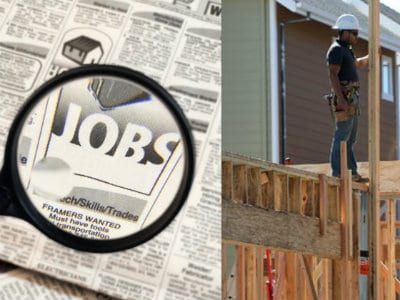The snapshot of the U.S. economy in the first week of May looks unusually promising.
Almost every arrow economists want pointing up – home sales, auto sales, stock market – is up. Meanwhile, interest rates and unemployment figures continue to decline.
Whether that picture is a true reflection of an economy on the mend is still subject to interpretation and debate, says economist Jim Wilcox of the University of California, Berkeley.
“Yes things are better and the economy is motoring along, but slowly,” Wilcox told Debt.org. “Some of the key factors, like employment, are stuck in second gear, while business is in fourth gear. We want them both in fifth gear and it’s going to take a while for that to happen.”
The stock market began the week with the Dow Jones and S&P 500 on all-time highs. The Dow Jones traded briefly over 15,000 for the first time in history Friday before closing at 14,972.19. The S&P finished Friday’s trading session at 1,614.22. The NASDAQ also had a winning week, moving up 38 points on Friday to finish at 3,378.63
Unemployment down
The good news from Wall Street was fueled by a better-than-expected labor market report. The U.S. Department of Labor reported the unemployment rate in April fell to 7.5 percent — the lowest it’s been in four years. The federal agency also showed that 165,000 jobs were added in April.
The number of people filing for unemployment benefits for the first time fell to 324,000, the lowest level since January 2008, records show.
The employment news contradicts popular sentiment that the job market would slow down as the economy felt the effects of sequestration, the $85 billion reduction in government spending.
Mortgage rates dropping
The housing industry is riding a long run of low mortgage interest rates. The 30-year fixed mortgage rate dropped to 3.35 percent, not far behind the all-time record low of 3.31 percent set on Nov. 21, 2012.
The 15-year fixed-rate was a record low of 2.56 percent — that’s down from 2.61 percent a week ago and lower than 3.07 percent in 2012. Adjustable interest rates also dropped. The one-year and five-year ARM rates are at 2.56 percent. Federal Reserve officials have indicated the low rates will continue until the unemployment rate shrinks to 6.5 percent.
Those rates continued to fuel the rebirth of the housing market with more people buying homes. Prices on residential real estate have been the highest since May 2006. The S&P/Case-Shiller index of property values increased to 10.2 percent over the past year. Home values in Phoenix, Ariz. lead the way with a 23 percent jump from a year ago. Values in San Francisco were up 18.9 percent and Las Vegas advanced 17.6 percent.
Not surprisingly, the positive vibes from the housing industry have helped re-start the lumber industry.
The lumber industry, which did 37.5 billion board feet in 2012, is on pace to go over 40 billion in 2013. That is still a long way from the 65 billion board feet produced in 2005 at the height of the housing boom, but also is a considerable improvement from the 33 billion feet sold when things bottomed out in 2010.
“We’re probably doing double the construction we did at the depths of the recession and the interest rates are fueling more purchasing power, which is helping home sales rebound,” Wilcox said. “But remember, that is still far less construction than what we’d like in our economy. The housing boat has come off the ocean floor, but it still hasn’t broken the surface for where it should be.”
Boost in Auto Industry
The Big Three automakers – GM, Ford and Chrysler – saw their share of the car market increase 46.7 percent, up from 44.7 percent a year ago.
Truck sales led the way in April with 153,356 sold — that’s a 27 percent increase from 2012. It’s a sign that small businesses that depend on these vehicles as tools are replacing them as the economy improves.
“We’ll know the economy is really moving when the unemployment rate begins with 5-something,” Wilcox said. “Businesses are doing well from the standpoint of profits, but we’d like to see them put some of that money into hiring. When the unemployment rate hits 5-something, that’s a number this economy can safely and sensibly operate in.”
Sources:
- Vlastelica, R. (2013, May 3). Dow, S&P 500 close at record levels after jobs report. Reuters.com. Retrieved from http://www.reuters.com/article/2013/05/03/us-markets-stocks-idUSBRE93006T20130503
- Orton, K. (2013, May 2). Mortgage rates continue five-week decline. Washington Post. Retrieved from http://www.washingtonpost.com/blogs/where-we-live/wp/2013/05/02/mortgage-rates-continue-five-week-decline/
- Kowalski, A. (2013, April 30). Home Prices in 20 U.S. Cities Climb by Most Since May 2006. Bloomberg News. Retrieved from http://www.bloomberg.com/news/2013-04-30/home-prices-in-20-u-s-cities-increase-by-most-since-may-2006.html
- Hoffman, B. , Burden, M., Henkel, K. (2013, May 2). Truck sales, housing recovery boost Detroit carmakers in April. Detroit News. Retrieved from http://www.detroitnews.com/article/20130502/AUTO01/305020324#ixzz2SAfzctoH








